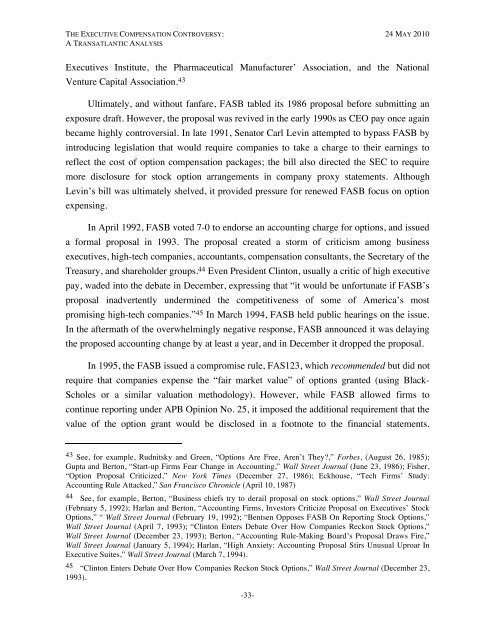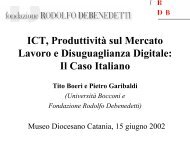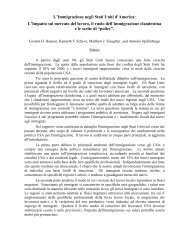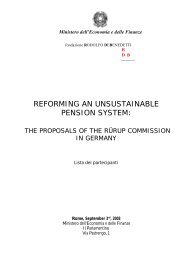The Executive Compensation Controversy - Fondazione Rodolfo ...
The Executive Compensation Controversy - Fondazione Rodolfo ...
The Executive Compensation Controversy - Fondazione Rodolfo ...
Create successful ePaper yourself
Turn your PDF publications into a flip-book with our unique Google optimized e-Paper software.
THE EXECUTIVE COMPENSATION CONTROVERSY: 24 MAY 2010A TRANSATLANTIC ANALYSIS<strong>Executive</strong>s Institute, the Pharmaceutical Manufacturer’ Association, and the NationalVenture Capital Association. 43Ultimately, and without fanfare, FASB tabled its 1986 proposal before submitting anexposure draft. However, the proposal was revived in the early 1990s as CEO pay once againbecame highly controversial. In late 1991, Senator Carl Levin attempted to bypass FASB byintroducing legislation that would require companies to take a charge to their earnings toreflect the cost of option compensation packages; the bill also directed the SEC to requiremore disclosure for stock option arrangements in company proxy statements. AlthoughLevin’s bill was ultimately shelved, it provided pressure for renewed FASB focus on optionexpensing.In April 1992, FASB voted 7-0 to endorse an accounting charge for options, and issueda formal proposal in 1993. <strong>The</strong> proposal created a storm of criticism among businessexecutives, high-tech companies, accountants, compensation consultants, the Secretary of theTreasury, and shareholder groups. 44 Even President Clinton, usually a critic of high executivepay, waded into the debate in December, expressing that “it would be unfortunate if FASB’sproposal inadvertently undermined the competitiveness of some of America’s mostpromising high-tech companies.” 45 In March 1994, FASB held public hearings on the issue.In the aftermath of the overwhelmingly negative response, FASB announced it was delayingthe proposed accounting change by at least a year, and in December it dropped the proposal.In 1995, the FASB issued a compromise rule, FAS123, which recommended but did notrequire that companies expense the “fair market value” of options granted (using Black-Scholes or a similar valuation methodology). However, while FASB allowed firms tocontinue reporting under APB Opinion No. 25, it imposed the additional requirement that thevalue of the option grant would be disclosed in a footnote to the financial statements.43 See, for example, Rudnitsky and Green, “Options Are Free, Aren’t <strong>The</strong>y?,” Forbes, (August 26, 1985);Gupta and Berton, “Start-up Firms Fear Change in Accounting,” Wall Street Journal (June 23, 1986); Fisher,“Option Proposal Criticized,” New York Times (December 27, 1986); Eckhouse, “Tech Firms’ Study:Accounting Rule Attacked,” San Francisco Chronicle (April 10, 1987)44 See, for example, Berton, “Business chiefs try to derail proposal on stock options,” Wall Street Journal(February 5, 1992); Harlan and Berton, “Accounting Firms, Investors Criticize Proposal on <strong>Executive</strong>s’ StockOptions,” “ Wall Street Journal (February 19, 1992); “Bentsen Opposes FASB On Reporting Stock Options,”Wall Street Journal (April 7, 1993); “Clinton Enters Debate Over How Companies Reckon Stock Options,”Wall Street Journal (December 23, 1993); Berton, “Accounting Rule-Making Board’s Proposal Draws Fire,”Wall Street Journal (January 5, 1994); Harlan, “High Anxiety: Accounting Proposal Stirs Unusual Uproar In<strong>Executive</strong> Suites,” Wall Street Journal (March 7, 1994).45 “Clinton Enters Debate Over How Companies Reckon Stock Options,” Wall Street Journal (December 23,1993).-33-









